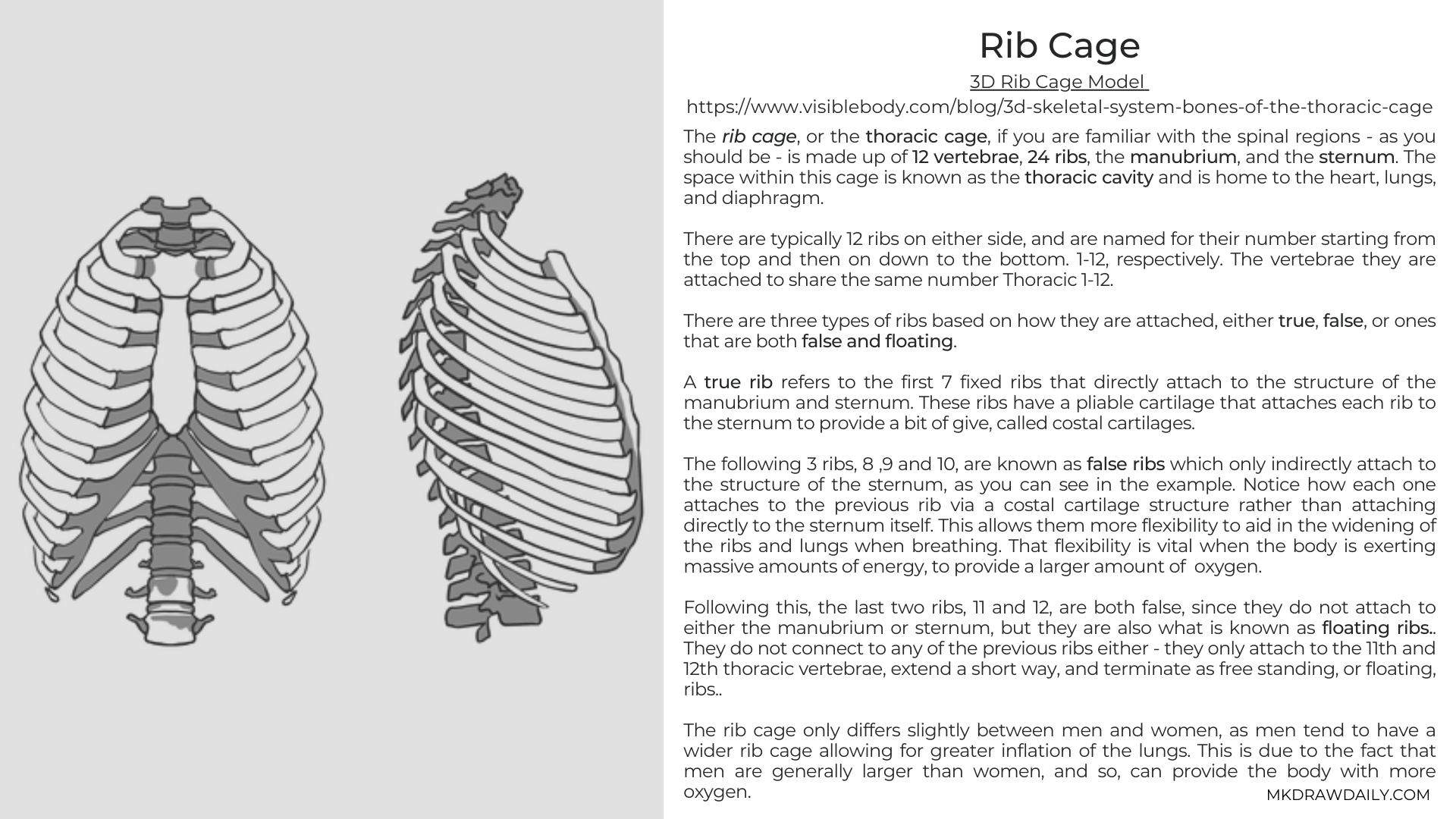

Welcome to Day NINE of class!
Today we have introduced the rib cage to our list of bone structures, and it is a vitally important structure to study. Not only it is considered to be one of the life giving functions of the body, it creates a number of important landmarks that can be seen on the outside of the body as well. You might imagine how we are able to see the individual ribs in many instances when exploring the human form, while one breaths, twists, or turns, for example.
Keep in mind how impressive it is for such a structure to maintain its unique flexibility due to the structure of the rib cage and spine. I'll say again, that our ribs attach to the sternum via a pliable cartilage to provide flexibility, called costal cartilages, and as you may recall what we talked about on day seven when referring to the thoracic region of the spine:
"This section of the spine not only provides our rib cage the ability to slightly expand and contract to aid in the breathing, it also provides lot of rotational and lateral flexion..."
ASSIGNMENT ONE
With all of this in mind, let's move onto today's assignment, which is to draw the rib cage - including the individual ribs. You will have plenty of practice drawing simplified forms of the rib cage later on in this challenge. You can use the examples on the two previous pages along with the 3D model from visiblebody.com, to draw at least 2 views of the rib cage. One from the front and one in profile, however I encourage you to do as many as you can during your drawing session today.
Drawing the rib cage can be overwhelming, especially when trying to draw individual ribs, but keeping basic facts in mind, such as how many ribs there are, how they attach to the sternum, and the angle at which they descend from the spine to meet the sternum (see the profile views) will make this task much simpler.
Rib Cage 3D Model
https://www.visiblebody.com/blog/3d-skeletal-system-bones-of-the-thoracic-cage